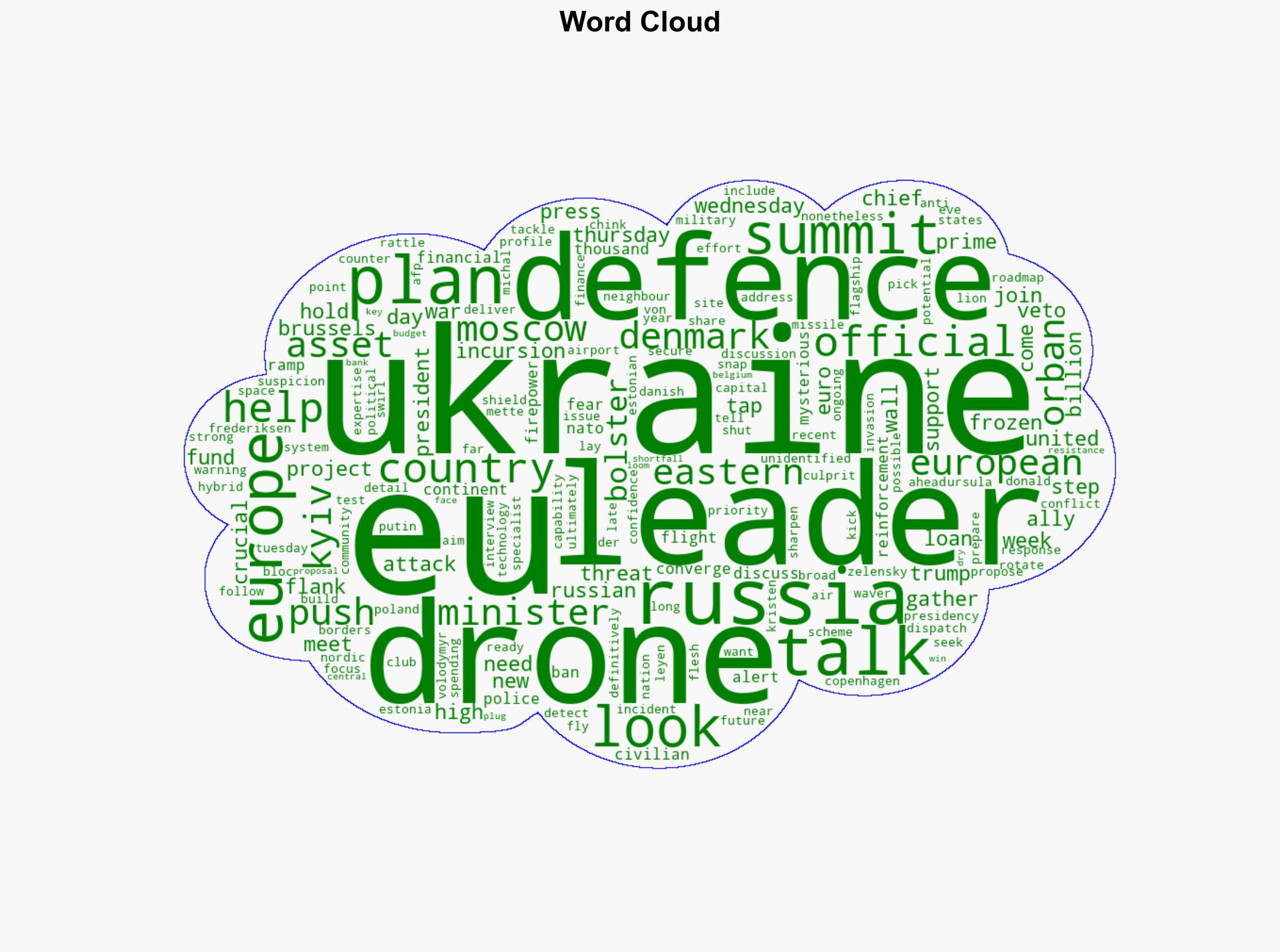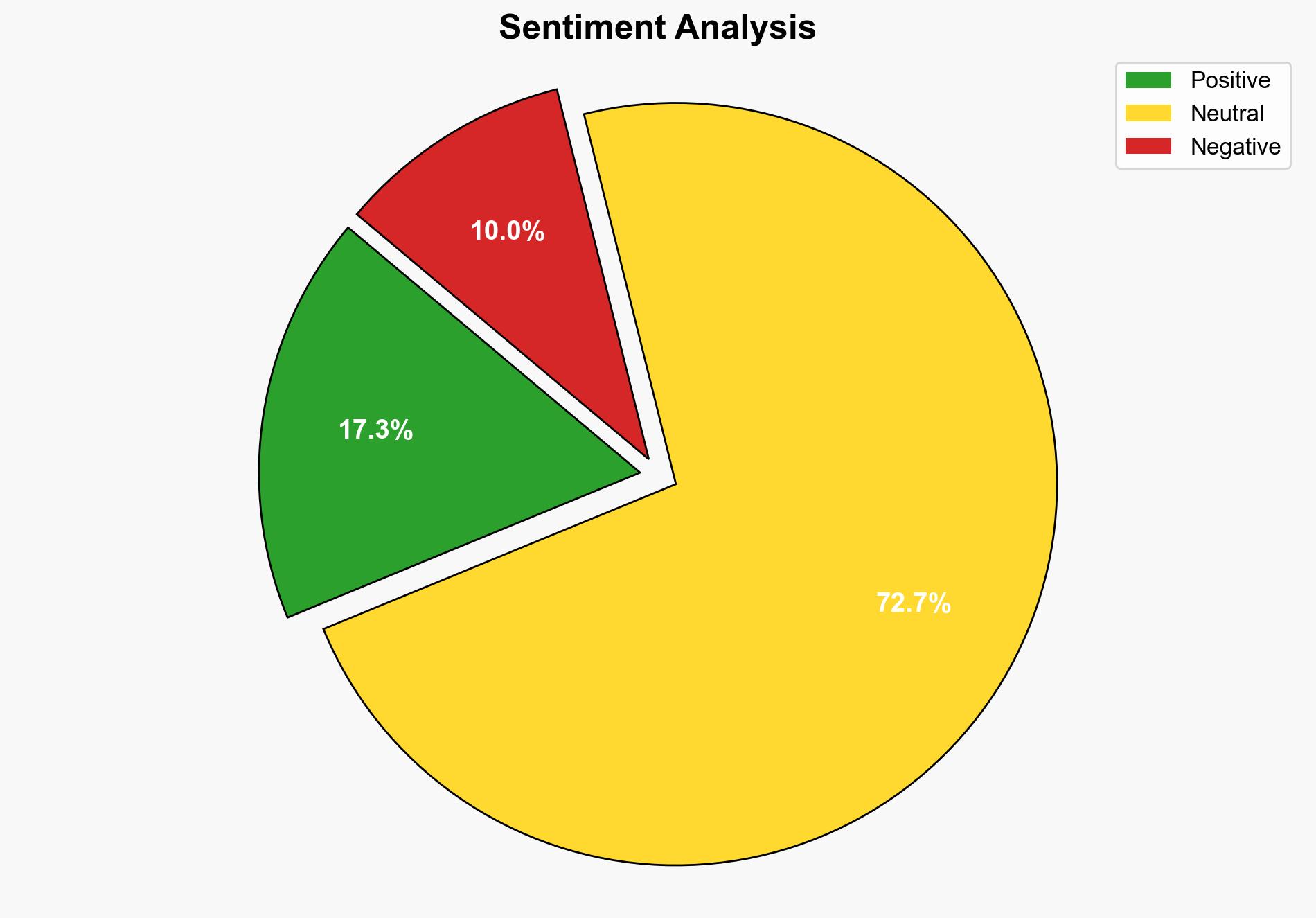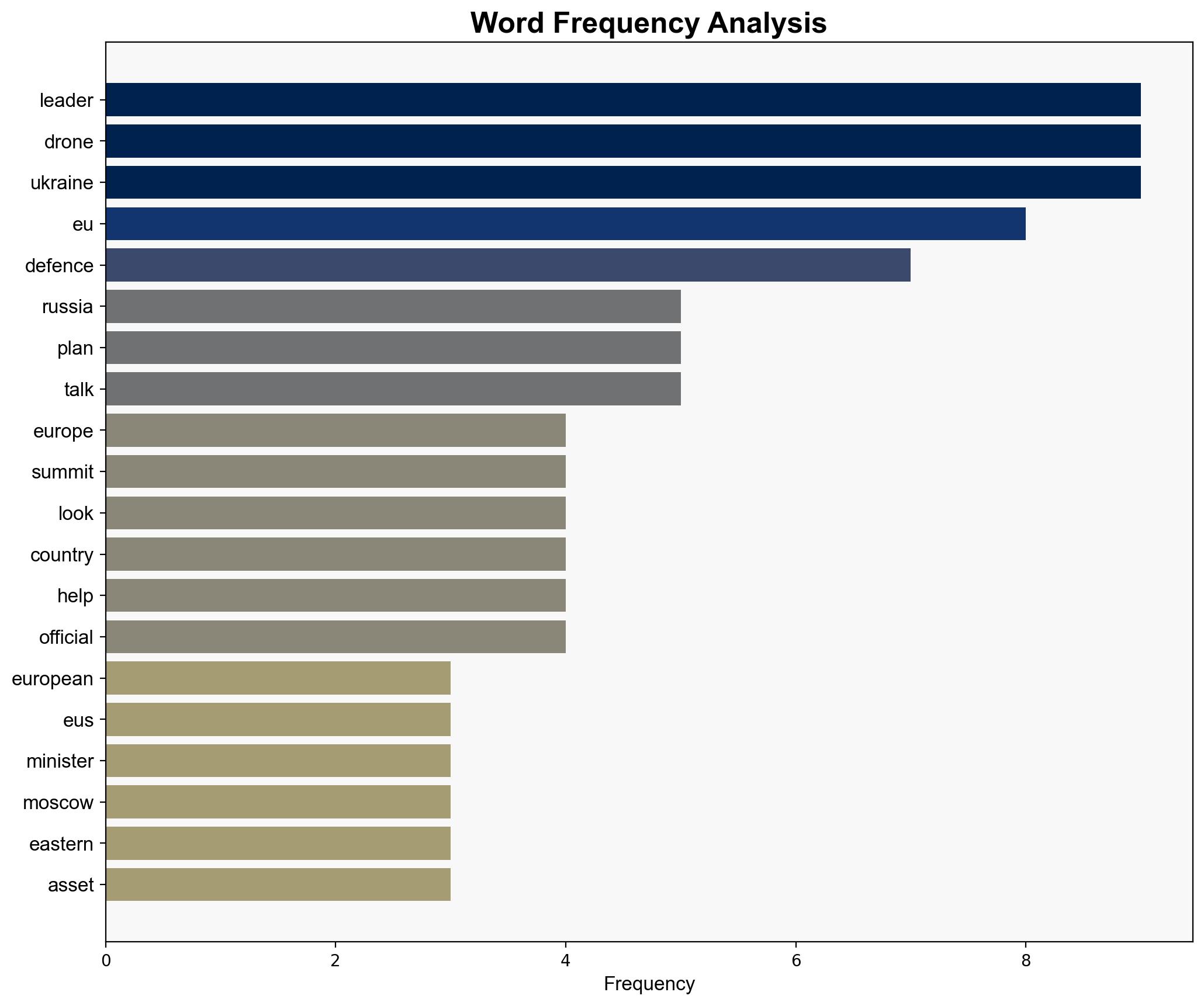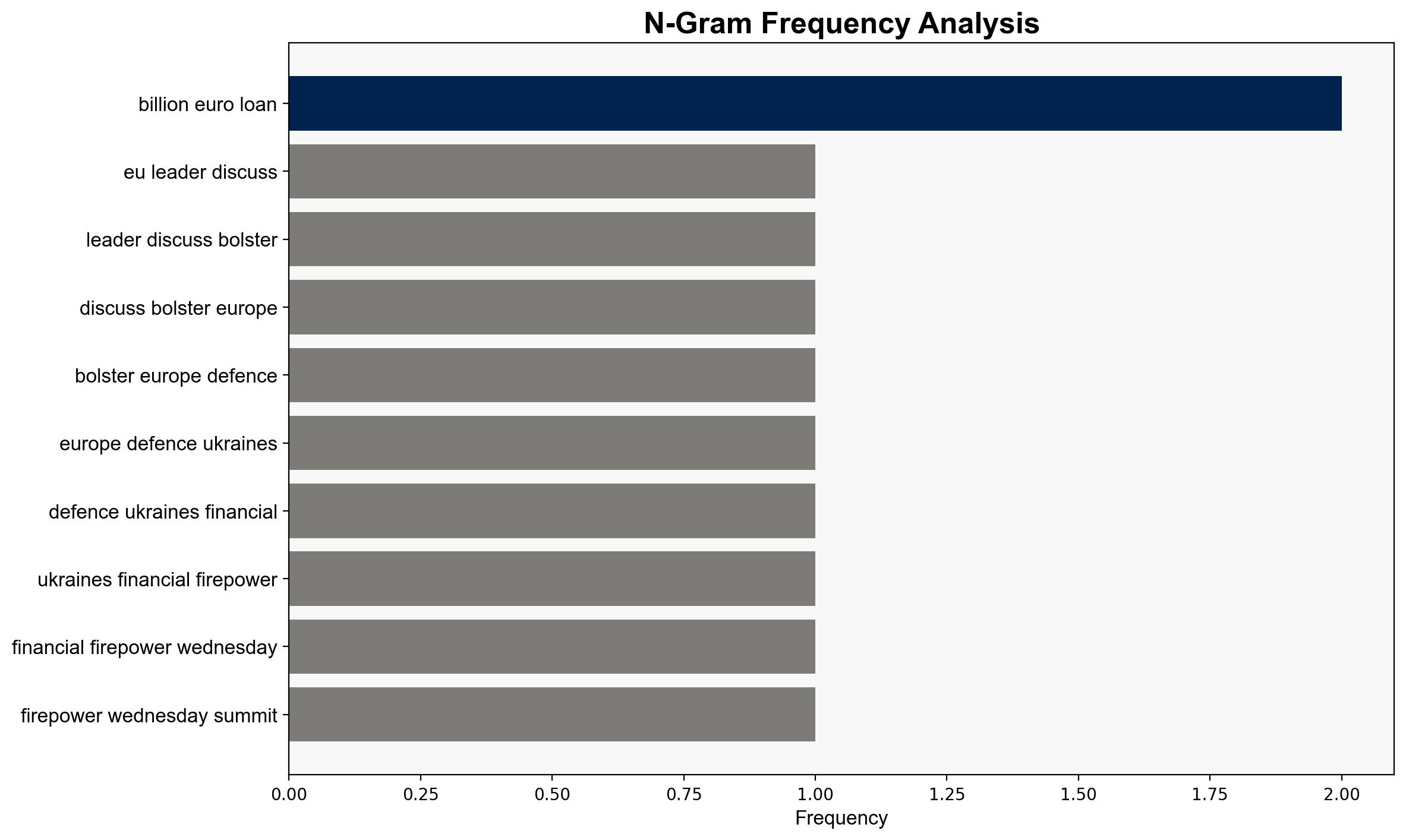EU Leaders Plot Defence Boost In Shadow Of Denmark Drones – International Business Times
Published on: 2025-10-01
Intelligence Report: EU Leaders Plot Defence Boost In Shadow Of Denmark Drones – International Business Times
1. BLUF (Bottom Line Up Front)
The most supported hypothesis is that the EU’s defense initiatives are primarily a response to perceived Russian threats, particularly in light of recent drone incidents in Denmark. Confidence in this assessment is moderate due to the lack of direct attribution of the drone activities to Russia. Recommended action includes strengthening intelligence-sharing mechanisms within the EU and enhancing counter-drone capabilities.
2. Competing Hypotheses
1. **Hypothesis 1**: The EU’s defense boost is a direct response to Russian aggression, exemplified by the drone incidents in Denmark, which are perceived as hybrid warfare tactics.
2. **Hypothesis 2**: The defense initiatives are primarily driven by internal EU dynamics, such as the need to demonstrate unity and resolve amidst political pressures, with the drone incidents serving as a convenient catalyst rather than a direct cause.
3. Key Assumptions and Red Flags
– **Assumptions**:
– Hypothesis 1 assumes that Russia is behind the drone incidents, despite no definitive evidence.
– Hypothesis 2 assumes EU internal politics are a significant driver of defense policy, potentially underestimating external threats.
– **Red Flags**:
– Lack of concrete evidence linking the drones to Russia.
– Potential bias in attributing actions to Russia without clear proof.
– Over-reliance on the drone incidents as a singular justification for defense initiatives.
4. Implications and Strategic Risks
– **Implications**:
– Increased EU defense spending and collaboration could deter potential aggressors but may also escalate tensions with Russia.
– Failure to accurately attribute the drone incidents could lead to misallocation of resources.
– **Strategic Risks**:
– Misinterpretation of the threat could lead to unnecessary escalation.
– Economic strain on EU countries due to increased defense spending.
– Potential cyber threats as a form of retaliation or escalation.
5. Recommendations and Outlook
- Enhance intelligence-sharing frameworks within the EU to improve threat attribution accuracy.
- Invest in counter-drone technologies and training across member states.
- Scenario Projections:
- **Best Case**: Strengthened EU defense deters aggression without escalation.
- **Worst Case**: Misattribution leads to heightened tensions and economic strain.
- **Most Likely**: Gradual enhancement of EU defense capabilities with ongoing political negotiations.
6. Key Individuals and Entities
– Mette Frederiksen
– Volodymyr Zelensky
– Ursula von der Leyen
– Kristen Michal
– Viktor Orban
– Antonio Costa
– Friedrich Merz
7. Thematic Tags
national security threats, cybersecurity, counter-terrorism, regional focus





